Last Updated on April 11, 2023 by Dee
Do you often find yourself feeling creatively blocked? Maybe you feel like you’re not good enough to be an artist, or that your art isn’t good enough. STOP RIGHT THERE! You are an artist, and your art is good enough. The only way to get better is to keep practicing and pushing yourself. One great way to do this is to start a daily sketchbook.
In this blog post, I’ll give you 17 top tips to help get you started on your creative journey. So what are you waiting for? Get inspired and start sketching!
What is a daily sketchbook?
A daily sketchbook habit is essentially a daily practice of sketching, similar to daily meditation.
The daily sketchbook has been known for centuries as an effective way to improve your drawing skills and achieve a sense of peace and alleviate anxiety.
This therapeutic activity is for anyone of any level. It’s an opportunity to draw daily and also brings more creative flow into your daily life.
For this article, we will be talking about a daily sketchbook as it relates to drawing. However, these tips can easily be applied to many other daily creative practices.
With that being said, let’s get into the daily sketchbook tips!

17 Top Tips for Your Daily Sketchbook
If you are wondering how to how to start a sketchbook for beginners follow these easy steps…
Start Small
Don’t go out and buy a bunch of expensive drawing materials before you start your daily sketchbook practice. It’s better to just start small. Instead, just take a piece of paper and draw with what you have on hand.
The daily sketchbook practice should be more about the daily creative routine than the quality of your work.
Commit To It For Just 30 Days
This is likely my favorite daily sketchbook tip because so much of improving ourselves is about taking small daily steps forward until we achieve our ultimate goals.
Make a daily sketchbook commitment to yourself for just 30 days.
If you decide that daily sketching isn’t for you, you can always stop the daily practice after 30 days and move on with your life. But if it’s not too hard, the daily sketchbook practice might change your life a little bit.
[Related article: 59 Aesthetic Things to Draw]
Work Towards An End Result
When sketching daily, it’s easy to get caught up in the process.
But don’t forget about the end result! Think carefully about your final goal and where you want to see yourself at the end of drawing for 30 days.
It’s a good idea to post your drawings to a social media account to keep a record of your drawing process and progress!
The daily sketchbook is really all about daily creative flow, and if you can keep that mentality, long-term daily drawing will become much easier for you.
Buy A Good Sketchbook
The daily sketchbook is an opportunity to make a daily practice out of drawing, which will help improve your skills in the process. So don’t skimp on the sketchbook – even if its a your first beginner sketchbook!
You can buy cheap paper sketchbooks that might tear easily or aren’t suited to daily drawing.
Instead, invest in yourself and buy a high-quality sketchbook that you will find easy to work with daily.
Set A Schedule For A Specific Time Of Day
To simplify your daily process, try setting a time for daily sketching each day. This can be as early as 5 am if that’s when you have extra free time or as late as 10 pm if you don’t go to bed until then.
You might wonder why daily sketching would be easier in the morning overnight.
The reason for this is because of our circadian rhythms, which are biological responses that help keep us regular daily sleep patterns.
Try it out and see what time of day works best for you!
[Related article: 27 Awesome Gifts for Artists who Draw]
Start Small And Then Build Up
To really hone steady daily drawing, you’ll need to start small with daily practice and then build it up daily.
Let’s say your daily draw time is for 20 minutes. If this is the case, try starting with just five daily minutes and slowly working up from there until you get a daily drawing routine that works for you!
Keep Your Sketchbook With You At All Times
Keep your daily sketchbook with you at all times. This daily tip might seem like overkill, but it’s an essential practice because of the idea known as MSCS (Minimum Stimulus Control System).
Basically, our physical environment around us is likely to affect what we do daily without us even realizing it.
For example, if you go to a coffee shop early every morning before work, you can easily slip out your sketchbook and start a new daily sketchbook practice.
You might get really into it because of the environment around you.
So keep your daily sketchbook with you wherever you go so that you can continue your daily practice no matter where you are!
Find a Creative Nook
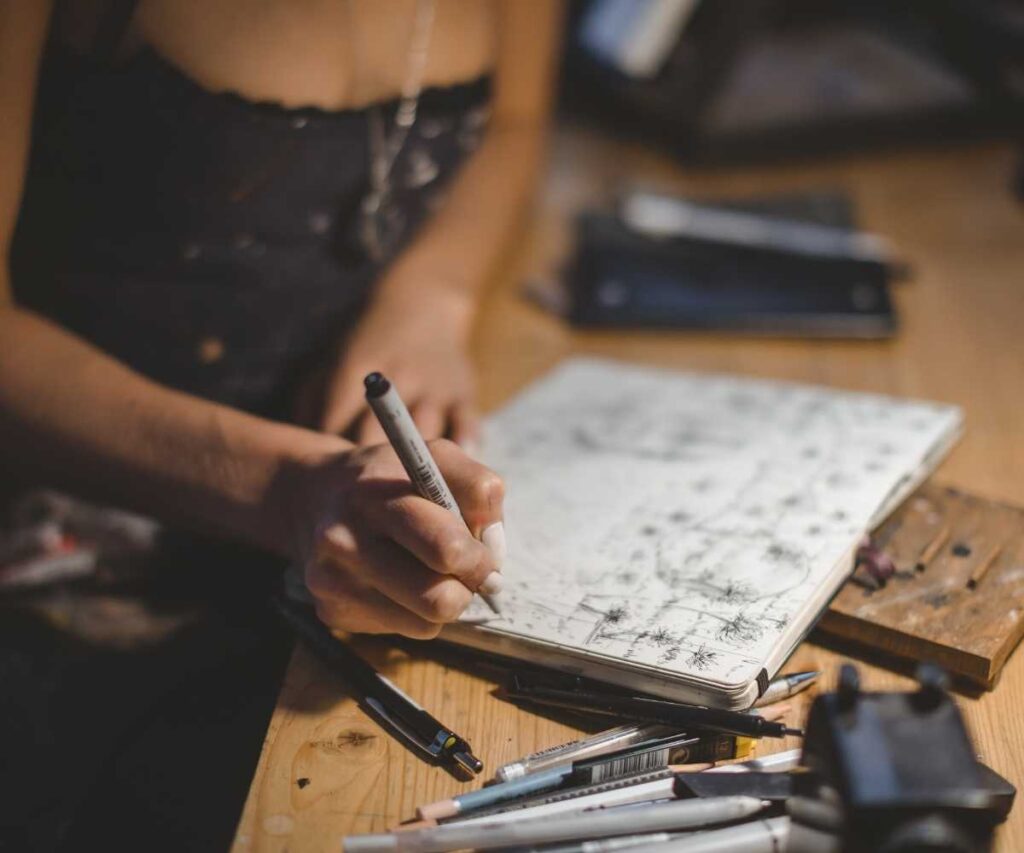
If you intend to draw at home, then it’s a good idea to find yourself a little nook that can become your creative space.
Before starting daily drawing, make sure that you have enough space for your daily practice.
Since daily drawing in itself can be an exercise in creativity and problem-solving, it will help if you have plenty of room to have inspirational objects and reference images lying close by!
Avoid Distractions (We All Have Them)
Most people find distractions easy to come by daily in our modern world of smartphones and social media.
Turn off your phone and set your alarm to make sure you have some quiet time to focus on your drawing.
Draw every day – even if it’s just an outline or rough drawing.
Daily sketching practice will help you gain confidence in your drawing skills.
It will also help you develop discipline, which is essential when it comes to developing your artistic skills.
[Related article: How to Trace on Procreate in 11 Easy Steps!]
Look at the world around you for inspiration.
From people to animals to plants, the world is your inspiration when it comes to daily sketching. There are so many sketchbook ideas for beginners and more advanced artists.
[Related Article: Looking for Autumn Inspiration? 191 Fall Things to Draw]
The daily sketchbook allows you to see everything around you with new eyes and draw them in daily practice.

Get inspired by looking through other artists’ work.
Do some research online or in your local newspaper or library and discover artwork and artists that you like.
Find out what mediums they use, what stimulates their creativity, and how they go about creating their artwork.
Discovering other artists and exploring their art-making process can really help you develop your own art-making.
[Related article: How to Improve Your Digital Creations | 22 Digital Painting Tips]
Experiment with different mediums and techniques.
Daily sketching allows you to experiment daily with a variety of mediums and drawing techniques.
For this daily tip, try different things like markers, pastels, pencils, gouache – anything that sparks your creativity!
Use some of your favorite colors to create moods or emotions.
Your daily drawing practice will help you develop your artistic sensibilities.
One great daily tip to follow is to use some of your favorite colors daily in your daily sketchbook, such as blue and green.
Using different colors daily can also help create moods or emotions. For example, yellow is optimistic, whereas blue is calming and soothing for daily practice.
Try drawing without lifting the pencil off the paper.
When you’re starting a daily practice, it can help to improve your drawing skills if you focus on controlling the pencil more than anything else.
When I was first starting daily sketching and daily drawing, I found that this tip helped me develop my control over the pencil.
Nowadays, I still like using this daily drawing tip from time to time when I’m stuck!
Draw with the non-dominant hand (if you can!)
This daily drawing tip requires some practice but can ultimately help develop your control over the pencil and improve your observational skills.
Using your daily sketchbook, try switching daily between left and right-handed daily practice.
Use Drawing Prompts for Inspiration.
Using a prompt list will help you to come up with daily drawing ideas.
A good tip is to keep a list of prompts that you can use in your sketchbook to help come up with ideas for daily drawings.
[Related article: The Right Digital Art Canvas Size]
Other Art Supplies for your Daily Sketchbook
Drawing lines with artistic style is an essential part of creating a beautiful piece of art.
The right art supplies can make all the difference when it comes to achieving the desired look and feel of your work.
One of the most important supplies for any artist is a good set of watercolor brushes.
These brushes come in a variety of shapes and sizes, and can be used to create a wide range of effects, from delicate washes to bold, expressive strokes. The bristles are soft and flexible, allowing for a smooth application of paint, while the handles are comfortable to grip.
You can also get a collection of pencils and pens to help you bring your artwork to life. From watercolor pencils to colored markers, these art supplies will help you to explore your creativity and create amazing works of art.
Download my FREE 30 Days of Drawing A Day Prompt List!
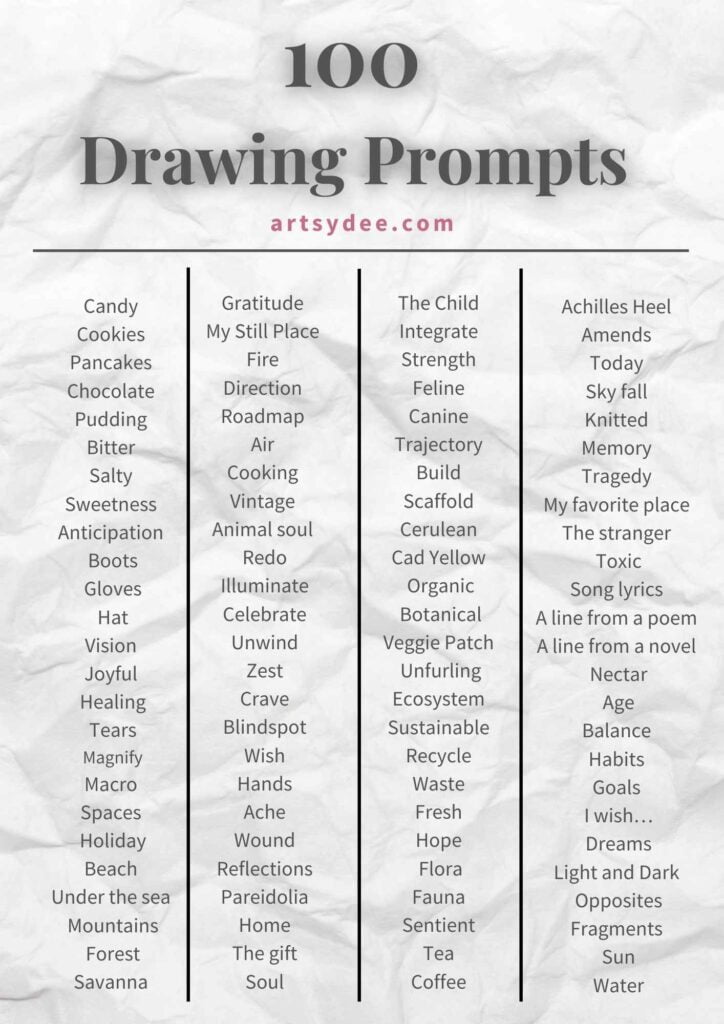
Some great daily sketchbooks to look at…
Vanessa Leung
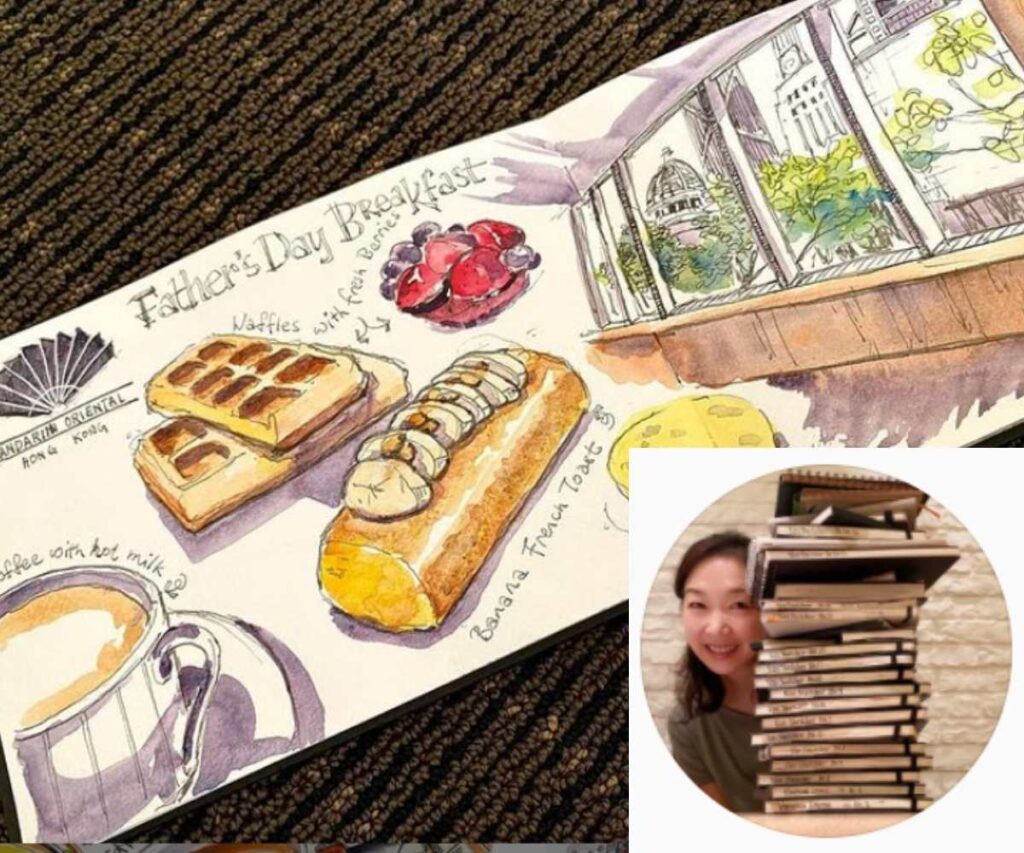
Find more of her work on www.vansketcher.com, or follow her on Instagram!
Cecilia Pettersson
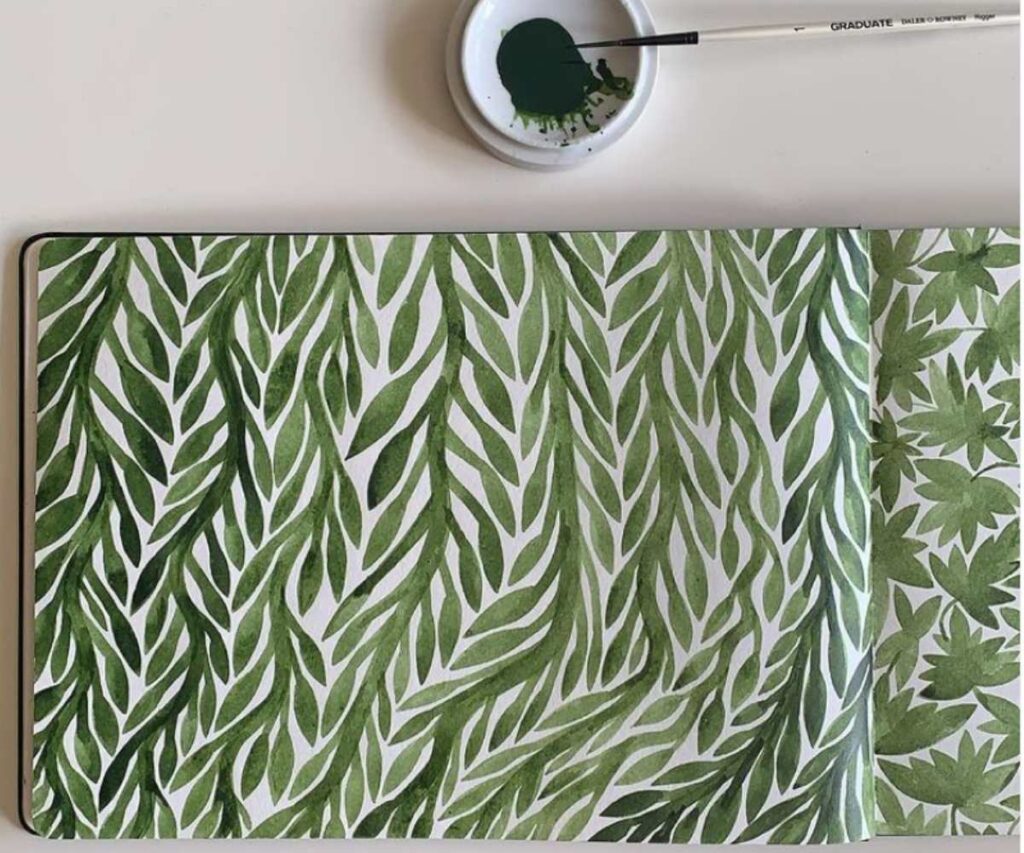
Find more of her work on ceciliapettersson.bigcartel.com , or follow her on Instagram!
Gayla Irwin
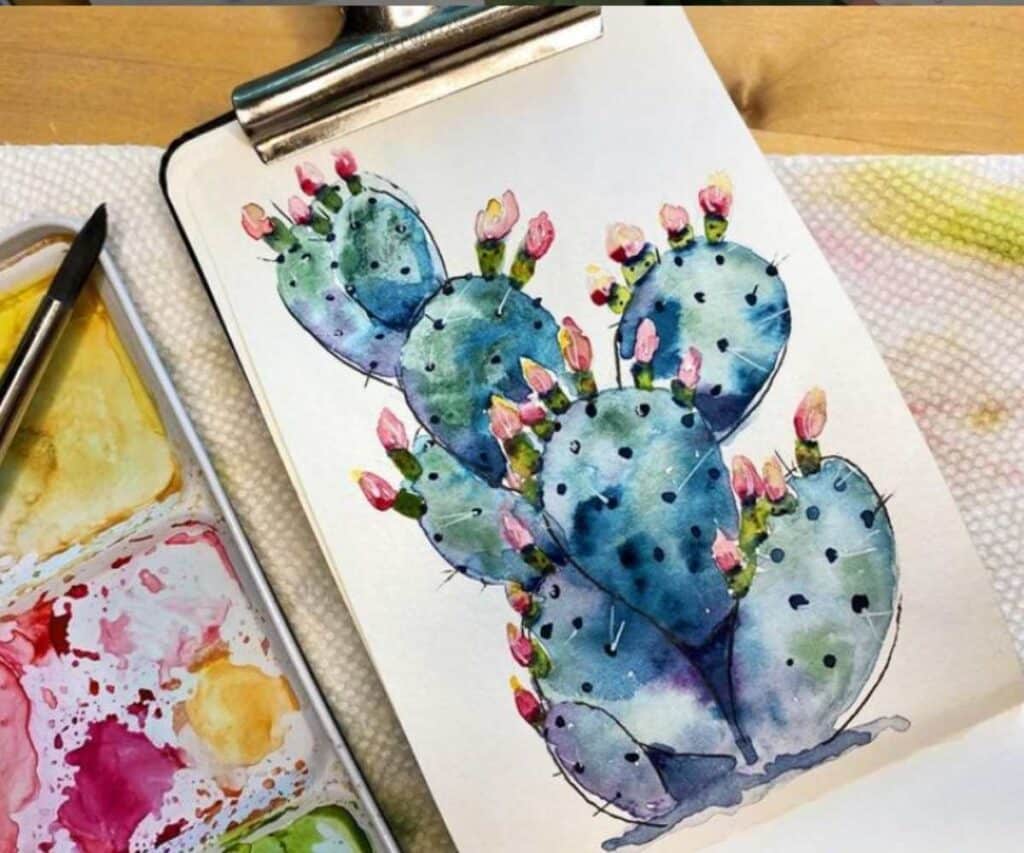
Find more of her work on Instagram!
Nuno Resende
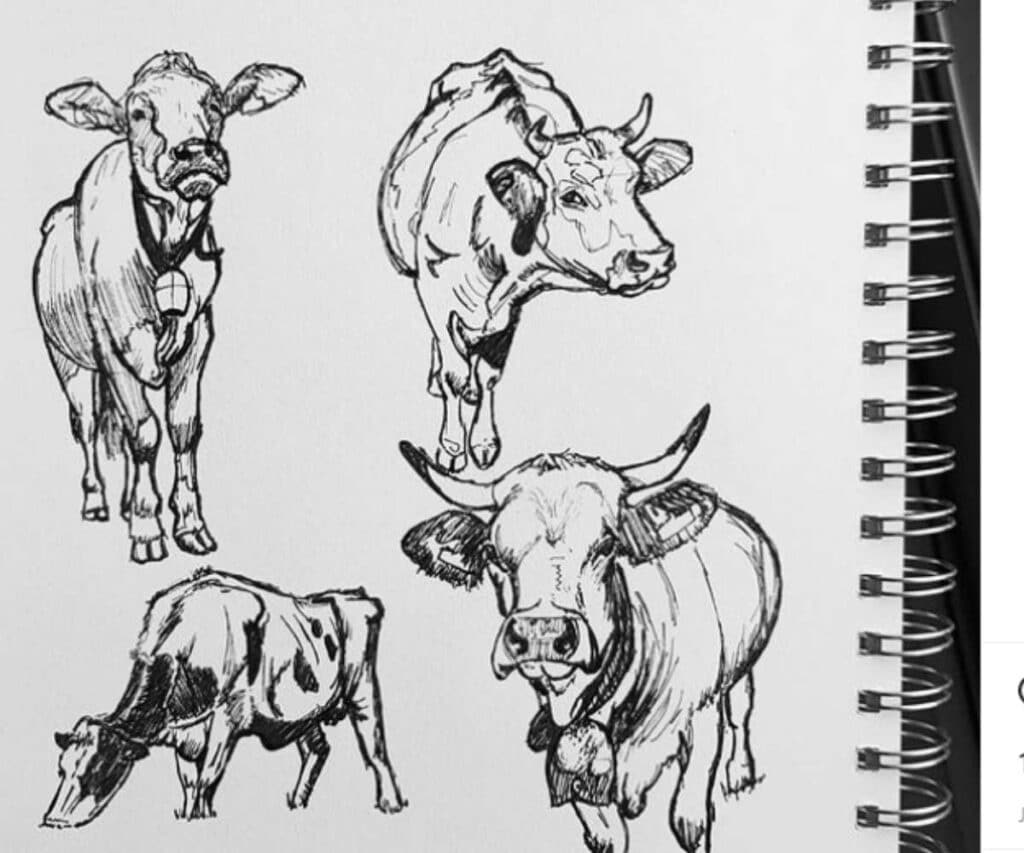
Follow Nuno Resende on Instagram!
Renee Walden
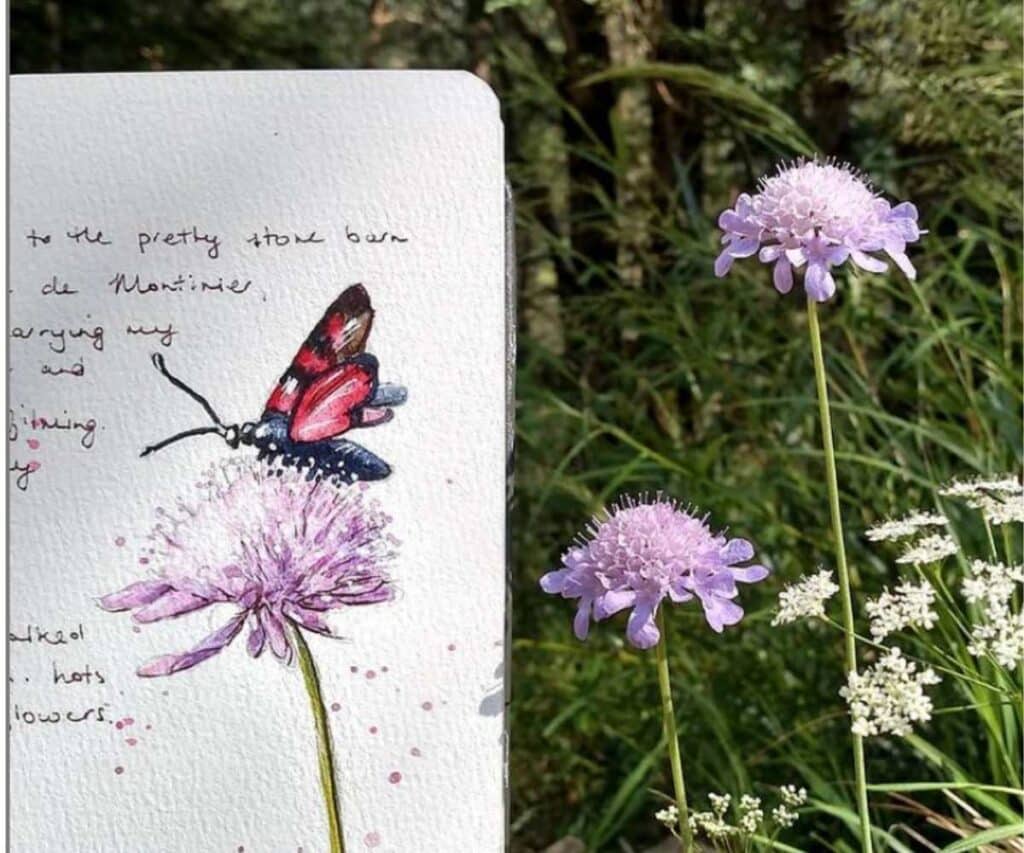
Find more of her work on www.walden.co.nz , or follow her on Instagram!
Other Frequently Asked Questions about Starting a Daily Sketchbook:
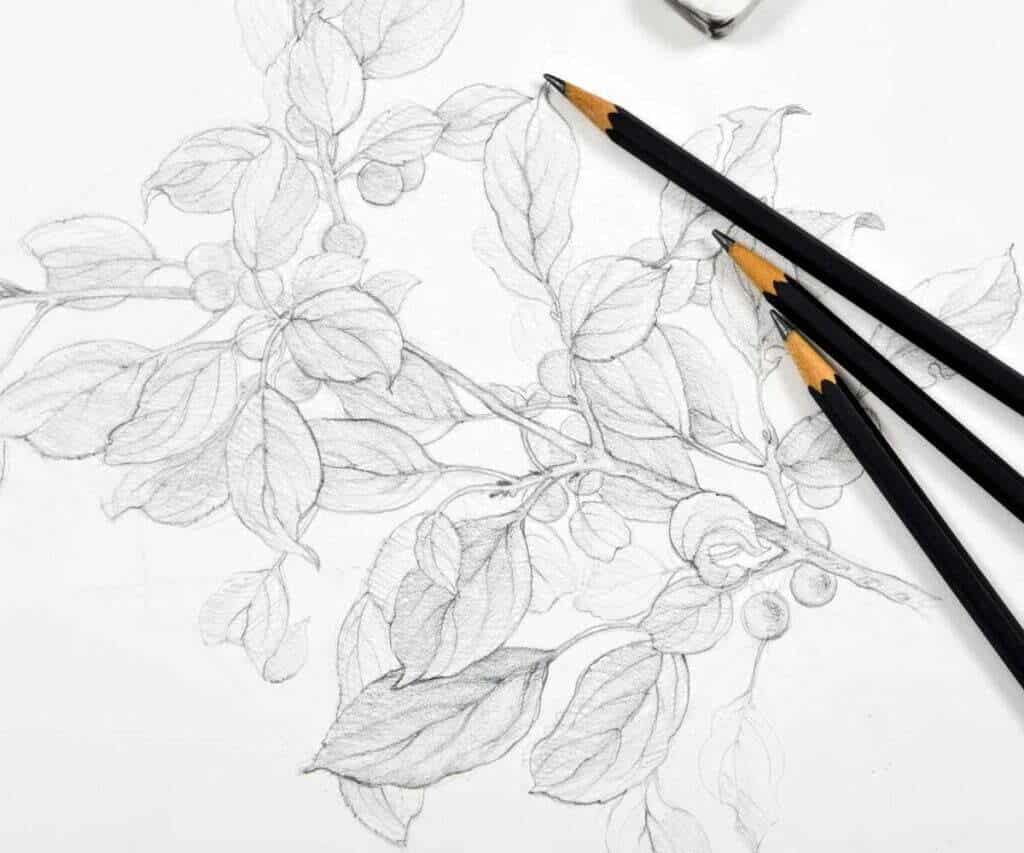
How do you keep a daily sketchbook?
To keep a daily sketchbook, you have to set aside time daily for it.
Some artists set aside 30 minutes after breakfast and get on with sketching every day, whether they are inspired to or not.
As well as the daily activity of sketching itself, a daily sketchbook should contain your notes from previous sessions; so that you can look back at previous work and learn from them.
How do you get daily inspiration?
A daily sketchbook is a daily practice. It’s important to note that you don’t have to finish the artwork every day for the ritual to count.

Why should you keep a daily sketchbook?
A daily sketchbook is an excellent way to improve your drawing skills and keep you focused on practicing art daily.
The daily habit of keeping a sketchbook can also help with developing discipline by showing up for yourself, staying true to your values and goals in life.
It’s the daily practice that counts, not the outcome of the day’s work.
Starting a daily sketchbook is like meditation because you are giving yourself a quiet space to unhook from the emotions and feelings of the day.
Your unconscious mind can work through things as your conscious mind focuses on sketching.
What materials and supplies do you need to start a daily sketchbook?
You don’t need expensive materials to start a daily sketchbook.
Here is a list of the readily available things you can use:
1. Pencils (graphite and colored)
2. Colored markers or Colored pencils
3. Watercolor paint and brushes
4. Charcoal pencils or sticks
5. Erasers (kneadable erasers are the best to use)
6. Masking Tape (for masking out unwanted areas of your work)
7. Tracing Paper – Regular and Clear (for tracing over photos or layering drawings)
What should you keep in a daily sketchbook?
1. Your daily drawing or sketching.
2. References for drawings you’ve done and inspiration for future drawings
3. Research material – old magazines, torn-out pages from old books, your own photos, found photos, or artwork that has inspired you.
4. Any ephemera (materials usually of little value) that has caught your eye can be used as reference/inspiration.
5. Notes or thoughts, daily musings that you come up with, observations about daily life that spark ideas for drawings
6. Inspirational quotes
How do I start sketching?
Sketching is an act of discovery. The process is more important than the shape or form.
The most important advice for a daily sketcher: just do it!
Remember, you don’t have to finish the daily sketch every single day – consistency and daily practice will make you better at drawing.
To help yourself along, make sure to have a sketchbook and a pencil ready, and set yourself a period of creative time every day where you can focus on drawing.
You can read my article on How to start drawing for more tips and guidelines.
How do you do a daily sketch?
Set yourself a daily period of time to sketch daily.
Clear space in front of you and just have your daily sketchbook and pencil ready.
Open your sketchbook to a new page or leave it open on an old page where you last stopped drawing on the previous day.
[Related article: How to Improve Your Digital Creations | 22 Digital Painting Tips]
A daily sketching routine to help with daily practice:
1. Set a timer for 15-20 minutes and start sketching! Don’t get fixated on how perfect you want your drawing to be – just get started.
2. Look at your reference image at least every 30 seconds to ensure you aren’t missing out on essential details. (This is only if you aren’t working from your imagination).
2. After 5 minutes, stop, take two deep breaths and examine your progress so far. Stand back and squint your eyes to get an overall sense of what the drawing looks like.
3. After 10 minutes, stop and look at what you have drawn again. Ask yourself questions:
* What am I trying to draw or capture (the subject matter)?
* What are my shapes like? Are they too big or too small? Do they overlap? Are any missing?
4. If you are not happy with your daily sketch, don’t worry; just start the next day again.
5. If you are happy with your daily sketch, continue drawing for the next 15-20 minutes.
What to draw when you don’t know what to draw?
As an artist, I know all too well that feeling of now knowing what to draw!
Sometimes inspiration comes easily, and other times… not so easily!
Ideas for when you don’t know what to draw:
1. Choose a single object and practice drawing it from different angles (front, side, top, etc.) or try various styles – sketch it as realistic as possible; then sketch it in a more impressionist style without any details, then try doing it in black and white, or add some watercolor.
2. Choose a word (or words) you find intriguing that day – like “mockumedia,” which I found on a chalkboard outside my favorite cafe – and do sketches of the term using different mediums.
3. Try daily abstract doodling to get your mind buzzing and ideas flowing – sketch interesting shapes, connections/disconnections, and patterns you find in the daily environment around you (like repeating graffiti on a wall).
4. Choose photo references like old family photos or photos of daily city life – try doing caricatures of the people in your life, or make self-portraits.
5. Make observations and do illustrations/drawings from them – like what you see on a train during your commute or an interesting pose you saw someone doing while you were walking down the street.
6. Make drawings based on your daily thoughts or daily musings.
7. Record your daily observations during a hike, bike ride, or walk and then do drawings based on this perspective.
8. Look for patterns and connections in life – like looking at how a passer-by runs to catch a train or at the daily activities of an outdoor cafe – and do drawings based on these objects/patterns.
9. Try figure drawing practice by sketching different poses of yourself (or others).
10. Draw still-life objects like daily mugs, daily cups, daily food, etc.
[What to Draw When You’re Bored! More tips and inspiration to get your creativity flowing!]
How long does it take for a person to get good at drawing?
Drawing is just another skill we can master through practice. The more they practice, the better you get.
If you are dedicated to the process of drawing, practice sketching often, and are getting regular feedback on your work, you can expect your drawing to improve in a few months.
Where can I find some sketchbook challenges or resources so I can stay motivated to fill my sketchbook?
There are so many sketchbook challenges and art challenges that take place every year! It is a great idea to start a sketchbook challenge to improve your drawing skills and keep your motivation up!
[Have a look at my post about starting an Art Challenge this year!]
Should I start a sketchbook in a lined journal?
NO! If you start a daily sketchbook in a lined journal, an art journal, or in a book that is meant to be solely for the written word, chances are you will feel confined and limited by the lines, and it will stay empty most of the time.
When you are just starting as an artist and daily sketcher, you want your daily sketchbook to take the form of an actual (or daily) art journal or artist’s sketchbook.
You don’t want it to be limiting in any way. The daily practice of daily sketching should be your primary focus.
The beauty and power of a sketchbook are that there are unlimited possibilities on a blank page.
The blank pages of a daily sketchbook will inspire you to draw or get creative and fill these empty pages with something beautiful.
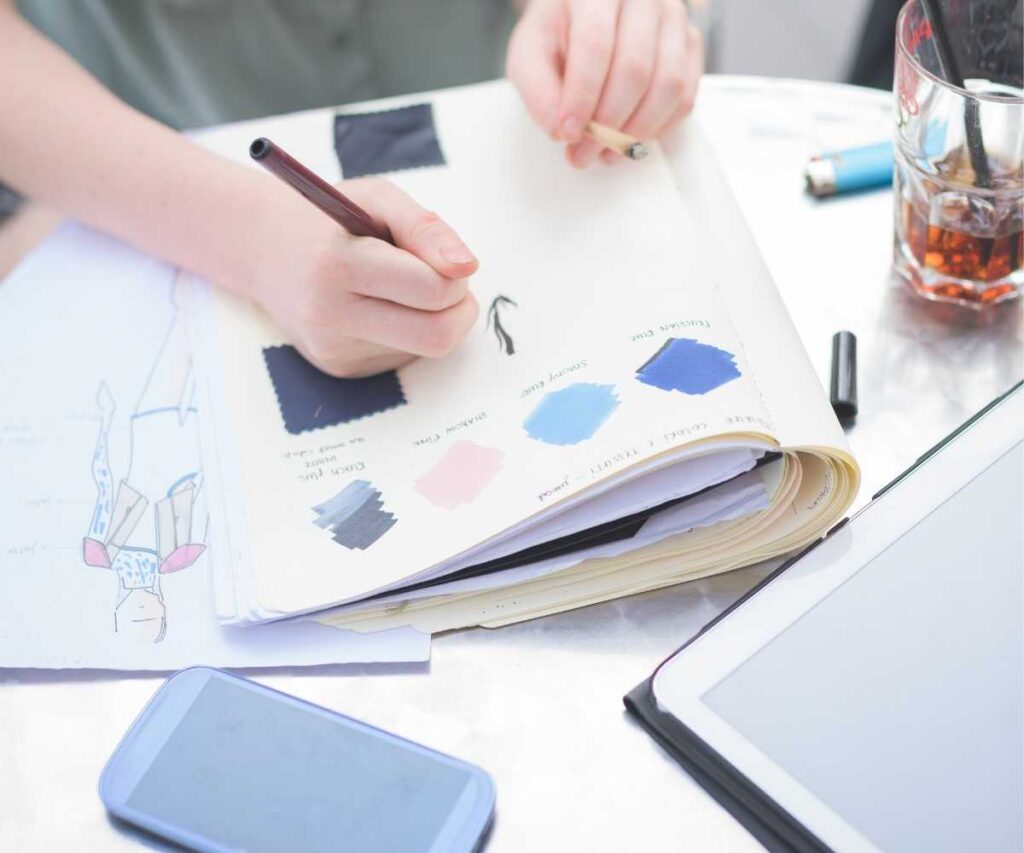
Conclusion
If you’ve been considering starting your own daily sketchbook practice, this article should have given you a good idea of what to expect and how.
The 17 great tips on finding the time for it, making sure not to overthink things too much, and giving yourself permission to be imperfect are all included in this post so that you can start your own personal journey towards artful happiness!
Other articles you may enjoy…
How to Get Ideas for Drawing: 31 Ways to Find Unique Ideas
13 Best Travel Sketchbooks for 2022: Perfect Gifts for Artists and Travelers
How to Get Your Sketchbook up to Scratch: 12 Easy Sketchbook Tips and Tricks!
The Best Paper for Ink Drawing: 10 Sheets That Work Wonders
18 Texture Drawing Examples to Help You Get Inspired: How to Draw Texture
The 17 Best Art Journal Supplies | Exciting Essentials for Creative Art Journaling


1 thought on “How to Start a Daily Sketchbook | 17 Top Tips to Get You Inspired”